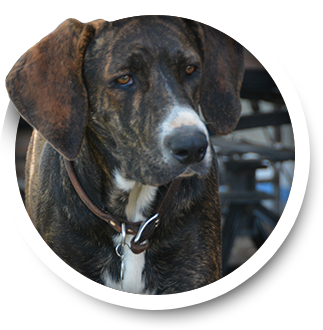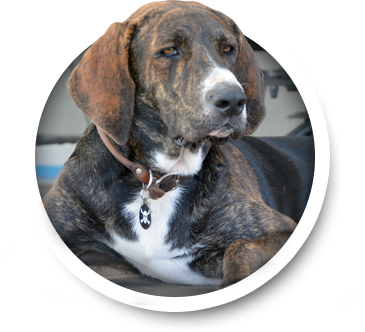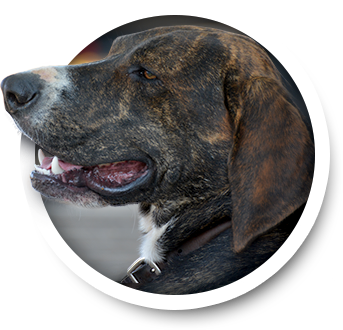Posted on 12/28/2017
 Brrrrrr......it's starting to really feel like winter here in Los Altos. Hi it's Duke and we are going to take a spin on Winter Tires today, so let's get those wheels in motion!
Brrrrrr......it's starting to really feel like winter here in Los Altos. Hi it's Duke and we are going to take a spin on Winter Tires today, so let's get those wheels in motion!
What type of technology do you use? Do you prefer an 8-track tape or an iPod? When it comes to winter tires, much of the public's perception dates back to when 8-track was the best way to listen to the Bee Gees.
Twenty years ago, winter tires differed from highway tires only in their tread design. We called them snow tires back then and they had big, knobby lugs that were designed to give good traction in deep snow. They had the same rubber compound as regular tires and they weren't very good on ice, packed snow or wet roads. They were not even very good on dry roads. They really helped in deep or loose snow, but they did a poor job the rest of the time. They were loud and rode hard. You couldn't wait to get them off in the spring.
Then all-season tires started to come along. All-season tires are really a compromise between summer and winter performance. They have acceptable hot weather ride and tread life, and you can get through mild winter road conditions OK. But there are some really good reasons to consider winter tires.
Modern winter tires do a terrific job in a wide range of winter conditions. First of all, below 45 degrees Fahrenheit, regular tires become hard and inflexible. That means they don't provide the road grip you need. Even if you don't live somewhere with a lot of snow, but it still gets below 45 degrees in the winter, you will be safer with winter tires.
In addition, they are specifically designed to more effectively move snow and water. That's the key to traction on ice, packed snow and wet roads. They use a micro-pore compound that allows the tire to bite into ice and snow. They also use wider grooves that run around the circumference of the tread to expel snow from the tire better. The lugs and grooves on winter tires have a special shape that throws the packed snow out of the tread as the tire turns. The tread is then open when it comes back in contact with the road and can provide good traction.
Winter tires also have a lot of sipes. Sipes are thin slits in the tread. The edge of the sipes grab ice and packed snow to provide tons of traction and to expel water and slush out of the tread. winter tires have a rounder casing to cut into the snow's surface. The treads on regular summer tires can actually get packed with snow instead and become very slick. winter tires offer 25% to 50% more traction than all-season tires. And when it comes to stopping power, all-season tires take 42% longer to stop than winter tires. Sometimes that's the difference between getting home safely and spending the night in a snow bank.
Now back when the 8-track was king, you just put snow tires on the drive wheels. That worked out OK because the rubber compound was essentially the same. Now, winter tires provide so much more traction than all-season or summer tires, that there's a huge difference between the traction at the front and rear ends of the car if you only put winter tires on the drive wheels.
For example: if you take a corner on an icy road and the rear end starts to slide out, essentially the rear is trying to pass the front because it's going faster. If you have high traction winter tires only on the front, they are going to be much more effective at transferring cornering grip and stopping power to the front wheels. This will actually cause the rear end to whip out even more.
That's why tire manufactures instruct their dealers that they must install winter tires on the rear wheels as well whenever they put winter tires on the front end of any vehicle. It's a major safety concern. It's strongly recommended that winter tires be installed on all four wheels on rear wheel drive vehicles as well. The front tires do most of the steering and braking work - it only makes sense that you provide the front end with the best traction you can.
People often assume that if they have four-wheel drive or all-wheel drive they don't need winter tires on all four wheels. Would you intentionally disconnect the four-wheel drive in poor road conditions? Of course you wouldn't, but that's essentially what you do if you only put winter tires on one end. It only makes sense to have the same level of traction and control at all four corners.
The province of Quebec in Canada has issued a law requiring all passenger vehicles, taxis and rental cars with Quebec license plates to install a full set of four winter tires between November 15th and April 1. It's that important.
Many modern cars have traction control and anti-lock brakes so people may think that they don't need winter tires. But you need traction to accelerate, steer and stop. The tires provide the traction so that the traction control and anti-lock brakes have something to work with.
Look for tires with the symbol of a mountain with a snowflake in it. This means the tire complies with the severe snow standard. All-season tires will have an M&S, for mud and snow, on the sidewall.
So when the temperatures drop below 45 degrees, be sure you have a set of four winter tires for maximum performance in snow, packed snow, ice, wet and dry roads. Your tire professional can help you find the right winter tire for your vehicle and driving needs.
Well here is to the New Year 2018 and safe driving,
Duke 
Posted on 12/19/2017

 Happy Holidays Everyone, it's Duke again and today were are going to bark the basics of Fuel Injection. All modern Los Altos vehicles come with fuel injection systems, so it's a topic Los Altos drivers need to know something about.......let's get barkin!
Happy Holidays Everyone, it's Duke again and today were are going to bark the basics of Fuel Injection. All modern Los Altos vehicles come with fuel injection systems, so it's a topic Los Altos drivers need to know something about.......let's get barkin!
The mighty fuel injector is a valve that delivers the gas or diesel fuel to the right place, in the right amount at the right time—to be mixed with air and burned in the engine.
So how many fuel injectors does your vehicle have? There's one for each cylinder. So four, six or eight for most folks in Los Altos, CA. Some vehicles have 10 or 12 cylinders. The engine control computer makes adjustments to the fuel injector as it monitors the engine and other sensors. Fuel injectors are a pretty high-tech.
Allied Auto Works can help Los Altos drivers with a fuel injector cleaning service. What's the benefit? In order to work right, the fuel injectors have to deliver the fuel at a precise pressure at a very precise time. It's important that the fuel is sprayed in a particular pattern as determined by the engine design.
Over time, varnish can start to build up in the fuel injectors, effecting the pressure, pattern and timing of the fuel charge. The result is that the fuel doesn't get burned as efficiently as it could. That robs performance and hurts fuel economy.
What about dirty fuel? How does that affect the fuel injectors? The fuel injectors are the last stop in the fuel system. It starts at the fuel tank. Frankly, the best way to keep your fuel injectors working well is to use high quality fuel. It's tempting to shop for bargains in Los Altos with fuel prices as high as they are, but major brands in the Los Altos, CA, area have better detergents and additives and deliver consistent quality.
What about a good fuel filter? The fuel filter is component of the fuel system. Its job is to filter out the dirt and rust that collect in the fuel tank. If it's clogged up, the dirt will bypass the filter and head upstream to the fuel injectors.
It's important to replace the fuel filter when your manufacturer recommends it. That's part of a comprehensive fuel system cleaning.
There are different kinds of fuel injection systems. Port fuel injection systems, the kind most gasoline engines have, operate at 60 pounds per square inch. The injectors for the new gas direct injection engines Los Altos drivers are starting to see require 10 to 30 times as much pressure. And some diesel engines for passenger vehicles have injectors that operate at 30,000 pounds or more per square inch. There's no room for dirt and gum in a precision part like that.
There are a lot of good products available in Los Altos, CA, that can clean fuel injectors. They're best used to prevent fouling in the fuel injectors. Many can't clean a seriously gummed up injector – that requires a professional deep cleaning, like those we offer at Allied Auto Works in Los Altos. But putting the cleaner in the fuel tank after you've had Allied Auto Works take a look at your fuel system will help keep it clean. Be sure to read the label for directions.
Give us a call if you think your vehicle may be ready for a fuel injector cleaning and let them the guys at Allied Auto Works know that Duke schooled you on the basics.
Have Wonderful Holidays,
Duke

Allied Auto Works
2073 Grant Road
Los Altos, CA 94024
650.968.7227
http://www.alliedautoworks.com
Posted on 12/19/2017

Good day everyone, Cayenne here and today I am going to bark to you about how to improve your fuel economy.
 The price of gas around the south bay has got people in Los Altos talking. It seems that folks from Los Altos, Cupertino, Sunnyvale and Mt. View need a bigger vehicle to carry family and gear, or provide four wheel drive, are hit especially hard. That is why we thought it would be good to review some things that anyone can do to improve fuel economy.
The price of gas around the south bay has got people in Los Altos talking. It seems that folks from Los Altos, Cupertino, Sunnyvale and Mt. View need a bigger vehicle to carry family and gear, or provide four wheel drive, are hit especially hard. That is why we thought it would be good to review some things that anyone can do to improve fuel economy.
First let's start with how we drive around CA. People in Los Altos may not realize that they can really save on gas by just changing a few driving habits. One of the biggest is jackrabbit starts - you know, flooring the gas as soon as the light turns green. That really wastes a lot of fuel. Building up your speed at a slower pace uses less fuel and is easier on your engine and drive train. And don't drive with one foot on the brake. That's also a drag on fuel economy, and it wears out your brakes faster, too.
Another thing Los Altos drivers can do is drive more slowly - but only when it's safe. Sometimes on the freeway we drive an extra five ... ten . . . twenty ... over the speed limit. We do it to save time, but it only saves a few minutes out of maybe an hour long drive, and we may use 10 to 15 % more gas. Just leave a little bit earlier, save some money and arrive more relaxed.
Los Altos drivers can also try and combine all of their errands for the day into just one trip, rather than several. If you can put off a trip today that can be combined with one tomorrow, you can save some time and money.
Using your cruise control can save money too. Driving in CA at a constant speed really improves fuel economy. Be sure to only use your cruise control under safe conditions; you can look in your owner's manual for some good tips on using your cruise control.
Did you know that reducing the weight in your vehicle saves gas? Clean out the trunk or back seat from time to time so that you are not paying to carry a lot of stuff around Los Altos that you do not need in the vehicle. If you live in CA where there is snow and ice, clear it off your vehicle; it adds weight and messes with aerodynamics too.
Another tip is to avoid long idle times, which includes warming it up when you start. Modern engines do not require a long warm up to get going; just take it easy for a few minutes.
Be sure to get a new gas cap if yours leaks or is worn.
Now, let's start talking mechanical. Bottom line - the better you maintain your vehicle, the less fuel you will use. It all adds up in a big way. For example, replacing your dirty engine air filter will pay for itself in improved fuel economy before your next oil change - and will keep saving you after that.
A clean, well-maintained fuel system really pays big dividends. A clogged fuel filter wastes gas. So does a dirty fuel system, grimy fuel injectors and plugged up PCV valves. A fuel system service decreases the gas you use, and increases the power, so drivers in Los Altos can't go wrong with that.
Some of us ignore our Check Engine light. But fixing the problem that caused the light to come on will usually save some fuel as well. It may be a bad oxygen sensor that can really rob your fuel economy.
And, it may be time for a tune-up. Tune-ups should improve your fuel economy. Don't overlook the routine maintenance items, like scheduled oil changes, transmission and cooling system service. Dirty or low fluids actually use more fuel. Just look at your vehicle manufacturer’s recommended service intervals in the owner's manual, or ask your Allied Auto Works service advisor for the schedule.
Don't forget your tires. Underinflated tires waste gas. And if your wheels are out of alignment, you won't get the fuel economy you need.
As you can see, none of these things are very complicated or expensive for people in Los Altos to stay on top of. When you maintain your car properly, you save gas today and prevent repairs tomorrow. Give Allied Auto Works a call today and tell them Cayenne sent ya!
Happy Holidays,
Cayenne

Allied Auto Works
2073 Grant Road
Los Altos, CA 94024
650.968.7227
http://www.alliedautoworks.com
Posted on 12/14/2017
 Hey it's Duke and did you ever ask yourself, " Do I keep my old vehicle or buy a new one? " It's a question most Los Altos drivers ask themselves at some time or another. So today we will bark about the economics of it all.......so let's get barkin'!
Hey it's Duke and did you ever ask yourself, " Do I keep my old vehicle or buy a new one? " It's a question most Los Altos drivers ask themselves at some time or another. So today we will bark about the economics of it all.......so let's get barkin'!
Generally, what it comes down to is the choice between a car payment and the possibility of repair bills. Most of the time, we want to choose the car payment because we don't like the inconvenience and uncertainty of vehicle repairs. But that payment has a detrimental effect on our budget and bank account.
Edmunds.com is a great website to help you with your decision. This site uses repair histories to calculate the average repair bills for specific makes and models of cars. You can plug in the information for your vehicle and get an estimate on what it will probably cost you to continue owning that vehicle.
Now, Edmunds.com isn't a crystal ball. It can't know what will happen to your specific vehicle. But it can guide you in knowing how much money to budget for the repair and maintenance of your vehicle. Ultimately, that can help you in your decision to buy a new vehicle or wait a few years.
For example, a five-year-old Camry V-6 is projected by Edmunds.com to cost about $96 a month, on average, to repair and maintain (at the time of this writing). Remember, maintenance costs are part of vehicle ownership, whether it's a new vehicle or an old one, so the projected cost for repairs on your five-year-old Camry average out to only about $50 a month. That's a whopping lot less than a new car payment.
If your vehicle is older than five years, you should also talk to your friendly and knowledgeable professional at Allied Auto Works about its future. They are more familiar with the average cost of repairs for vehicles in your area and of specific problems they commonly see in particular vehicles. More importantly, they know you and they know your car. They can give you a heads-up on what repairs you may be facing in the near future.
Remember, the older your vehicle gets, the more important preventive auto maintenance becomes. Over time, vehicles accumulate wear and debris, and we just have to give them a little more attention. Getting to know your vehicle and its peculiarities is also good auto advice for Los Altos drivers.
If you decide to keep your older vehicle, you may want to talk with your Allied Auto Works service advisor about fluids specially formulated for older engines. These motor oils, transmission and other fluids are designed to clean older engines and automotive systems and recondition their seals and gaskets.
Good care at Allied Auto Works in Los Altos will keep your older vehicle on the road in CA. And that may be just the boost you need in this uncertain economy. It may even save you enough to be able to afford that new vehicle you've been dreaming about.
Happy Holidays,
Duke 
Allied Auto Works
2073 Grant Road
Los Altos, CA 94024
650.968.7227
http://www.alliedautoworks.com
Posted on 12/7/2017

 Cayenne here and you can clearly see that I am right in your face today. So I thought I would bark about Wiper Blades and how important they are this time of year with rain, snow and dirt flying onto your windshields......so as I always clearly say, let's get barkin'!
Cayenne here and you can clearly see that I am right in your face today. So I thought I would bark about Wiper Blades and how important they are this time of year with rain, snow and dirt flying onto your windshields......so as I always clearly say, let's get barkin'!
If you're gonna drive around the Los Altos area, you've got to be able to see! So having a good set of windshield wipers is extremely important. We've all experienced the frustration and fear of not being able to see clearly during a storm or when our windshield is just dirty.
It seems like your wiper blades are always at their worst when you need them the most. But windshield wipers are like most other vehicle parts– they require regular attention in order to work their best.
You really ought to replace your wiper blades twice a year; in the spring and the fall. If it's going to be a particularly harsh winter in CA, you may even want to get special winter blades in the fall. Winter blades are designed to resist freezing.
Speaking of winter and freezing conditions, if your car has been sitting for a long time and the windshield becomes frozen, don't use your wipers to clear off snow and ice. That'll just tear up the blades and cause them to wear out more quickly. It may even damage the wiper motor.
Over time, wiper blades become hard and brittle, and then tear. They also lose their flexibility and just don't cover the windshield effectively.
Worn wiper blades aren't just a safety hazard; they can also scratch your windshield. That may require replacing the entire windshield, a big cost for such a little part.
Replace worn blades right away. Our professionals at Allied Auto Works can provide you with a quality replacement blade. They cost about the same as they would at the store, but installation is included at Allied Auto Works in Los Altos.
Of course you also need windshield washer fluid to help your blades do their work. Even though Allied Auto Works will top off the washer fluid with a full service oil change, it is a good idea to have some extra fluid at home, or in the car if you are on a long trip.
Always use windshield washer fluid. Plain water, even that fancy bottled water, may freeze in the fluid reservoir or on the windshield itself, making things worse. Besides, water won't do a good job of cleaning your windows.
And remember that some vehicles have two reservoirs: one for the windshield and one for the back window, which may be under the hood or somewhere in the back.
So follow these tips to keep your windshield clear and your eye on the road, and give Allied Auto Works a call and tell them Cayenne helped you see things in a better light!
Cayenne

Allied Auto Works
2073 Grant Road
Los Altos, CA 94024
650.968.7227
http://www.alliedautoworks.com